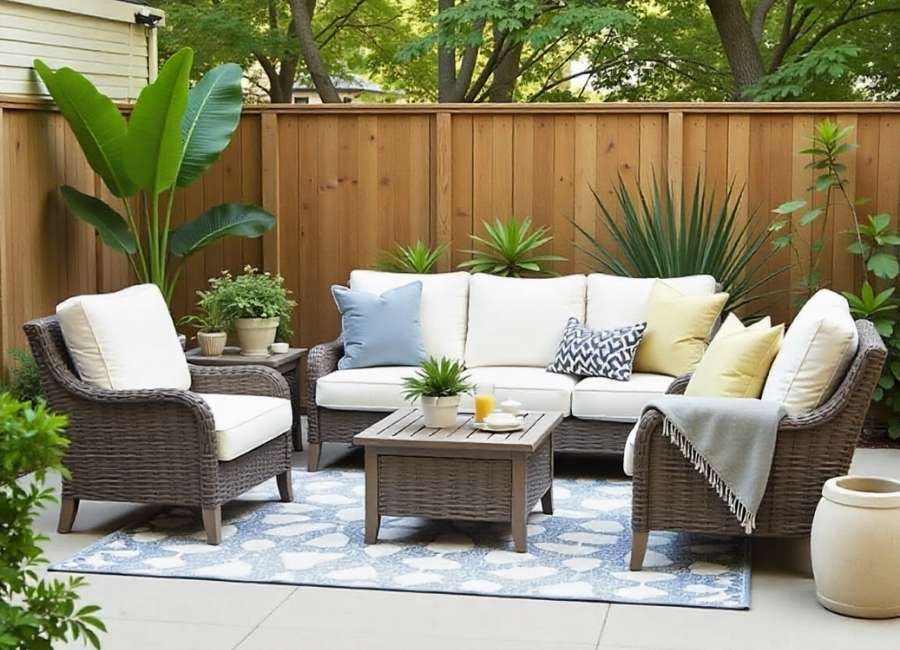Your backyard has considerable potential. You may have a small patio that fits a bistro set, or a big deck ready for a full seating area. No matter the size, the furniture you choose and where you place it can transform your outdoor space into a welcoming spot.
Arranging outdoor furniture is more than just filling up space. It’s about setting up areas for chatting, eating, and relaxing, all while keeping things easy to use. Whether you have a small balcony or a large yard, these tips will help you utilize your space effectively.
Start with a Plan
Before you drag that sectional across the deck, take a moment to assess your space. Take a walk around and consider how you actually use (or want to use) your outdoor space. Do you host dinner parties? Prefer quiet mornings with coffee? Want a spot for the kids to play while you supervise?
Measure your space and sketch a rough layout. Measure your space and make a simple sketch. It doesn’t have to be perfect. A quick drawing on graph paper or using a digital tool can help you see where things might go before you start moving furniture. Leave at least 24-36 inches between furniture pieces for easy movement.
- Sun exposure: Note where the sun hits throughout the day
- Views: Position seating to face your best outdoor features
- Privacy: Use furniture placement to create more intimate spaces
Create Functional Zones
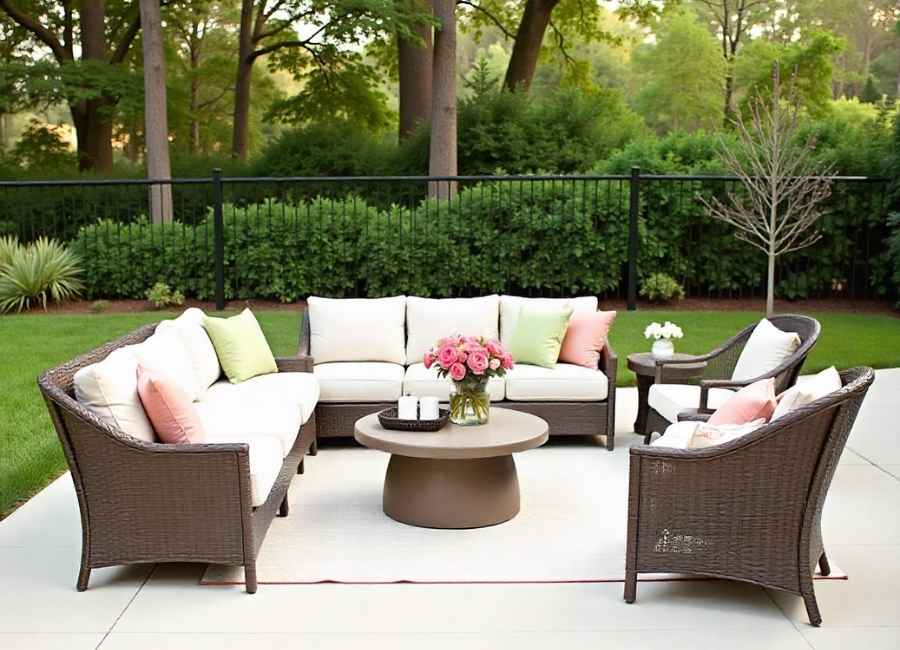
Treat your outdoor space like you would a room inside your Home. You probably wouldn’t push all your living room furniture against the walls, and the same idea works outdoors.
Conversation Areas
Arrange seating in a U-shape or around a central coffee table. This setup fosters interaction and ensures everyone feels included. Chairs should be placed close enough for easy conversation (approximately 8-10 feet apart, maximum) but not so close that people feel cramped.
If you have a sectional, try moving it away from walls or railings to make the space feel cozier. Place a side table next to each seat so everyone has a spot for drinks and snacks.
Dining Spaces
Put your dining table in the center of its area and leave enough space for chairs to move easily. Aim for about 36 inches of space on all sides. If your area is small, a round table can save space and make it easier to talk with everyone.
Try to set up your dining area close to the kitchen or grill. It’s much easier than carrying hot plates across the yard.
Relaxation Corners
Create a cozy spot with a lounge chair, a small side table, and a floor lamp for evening reading. Place this area in a corner or under some shade for a relaxing getaway.
Anchor with a Rug
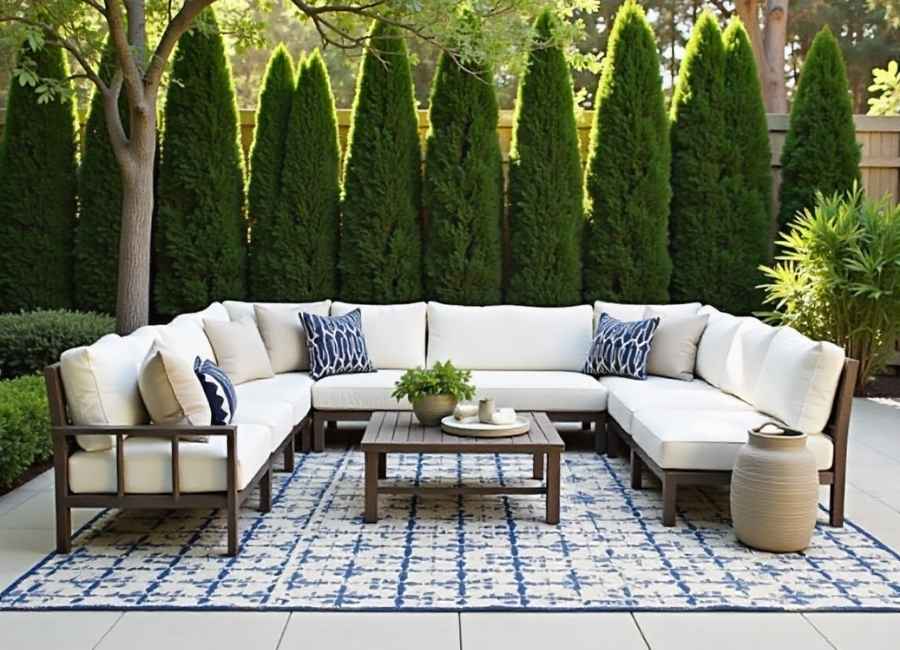
Outdoor rugs help mark out different areas and make things feel cozy, just like inside your Home. Select a rug that is large enough to cover all the furniture legs, or at least the front legs of your chairs and sofa.
Rugs pull furniture groups together and make your space look more put-together. They’re especially helpful on big patios where furniture can seem scattered.
Look for rugs made from weather-resistant materials, such as polypropylene, so they can withstand rain and sun. Patterns and darker colors also hide dirt better than plain, light rugs.
You don’t have to match everything, but keeping things balanced makes your space look better. If you have a large sectional on one side, consider adding large plants, a fire pit, or another grouping of furniture on the other side.
Symmetrical arrangements work beautifully for formal spaces. Try matching chairs flanking a doorway or identical end tables on either side of a sofa.
For a more casual look, consider using asymmetrical balance. Just pay attention to how things look overall. For example, a big tree on one side can balance out a group of furniture on the other.
Consider Scale and Proportion
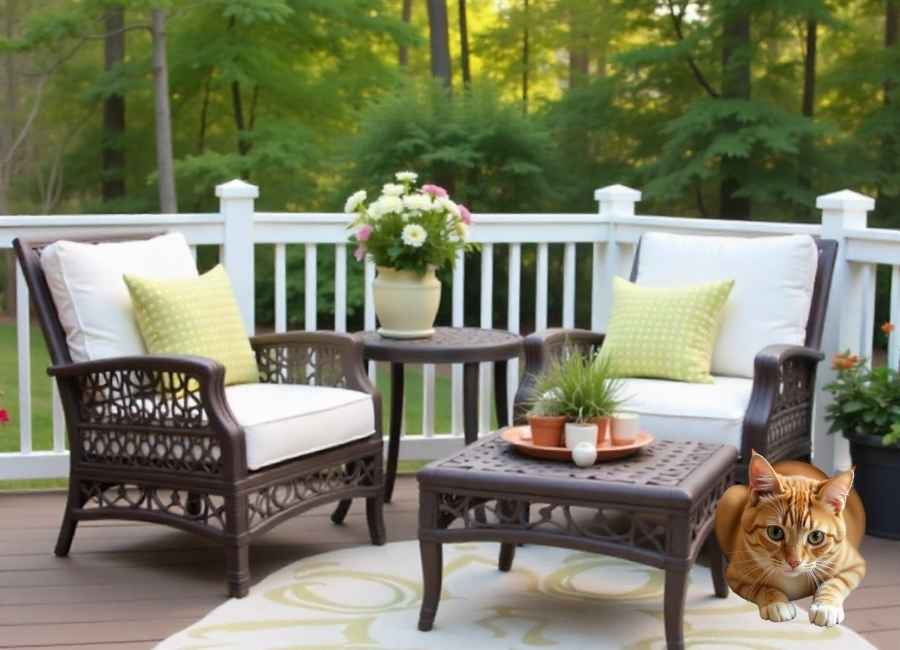
Pick furniture that suits your space. Big pieces can make a small patio feel crowded, while small furniture can seem lost on a large deck.
Use these guidelines:
- Small spaces (under 100 sq ft): Bistro sets, compact loveseats, folding chairs
- Medium spaces (100-300 sq ft): Standard dining sets, sectionals, multiple seating areas
- Large spaces (300+ sq ft): Generous sectionals, various zones, statement pieces like daybeds
Mix different heights to make your space more interesting. Try low lounge chairs with tall planters, or regular dining chairs with taller bar stools in another area.
Create Shade and Shelter
Think about sun protection when placing your furniture. Put seats under pergolas, umbrellas, or in the shade of trees. If your space gets too hot in the afternoon, you probably won’t use it, even if the furniture looks great.
Consider adding a retractable awning or a shade sail to protect areas that get a lot of sun. These can also let you enjoy your outdoor space even when it’s drizzling.
Add Layers and Accessories
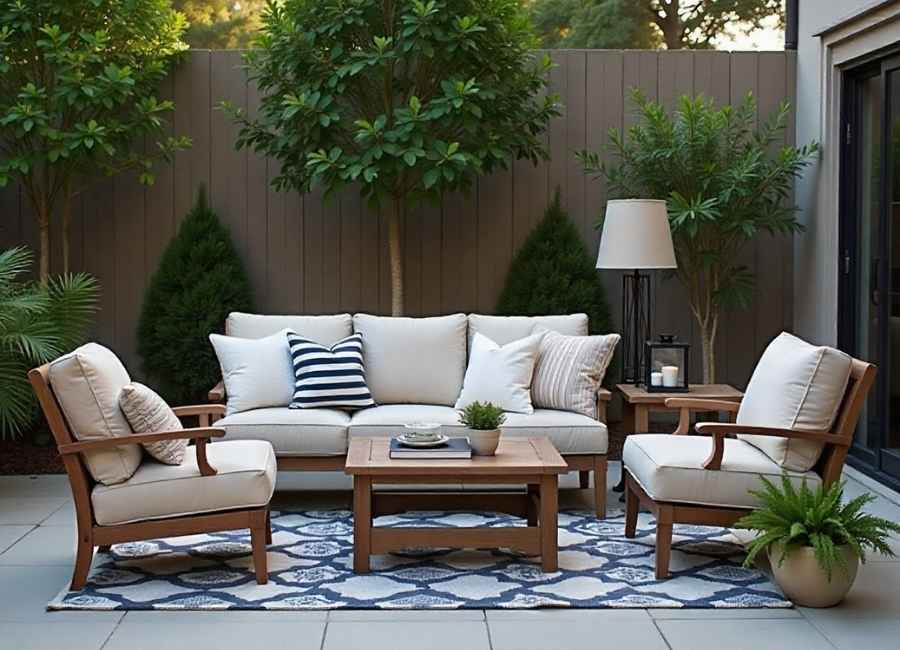
After you’ve set up the main furniture, add some comfort and style. Outdoor cushions, pillows, and blankets make the space feel cozy. Pick fabrics that won’t fade or get damaged by the weather.
Side tables and console tables are useful and don’t take up much room. Use them for drinks, books, or to display items like lanterns and potted plants.
Lighting can change the feel of your outdoor space at night. String lights add a nice atmosphere, and table lamps or lanterns help you see for eating or reading.
Leave Room to Move
It’s worth repeating: don’t pack your space too tightly. Ensure there are clear paths between furniture groups, allowing people to walk through easily.
Main walkways should have 36 to 48 inches of space. In smaller areas, 24 inches can work, but anything less will feel too tight.
Adapt for the Season
You don’t have to keep your outdoor furniture in the same spot all year. Adjust your arrangements as your needs change with the seasons.
In the summer, set up your furniture to maximize shade and catch any breezes. When it’s cooler, turn seats toward fire pits or heaters. You might even store some pieces to make room for other activities.
Test Before You Commit
After you’ve arranged everything, try out the space. Sit in each seat, walk the paths, and maybe have a meal or coffee with friends. You’ll soon notice if something needs to be changed.
Don’t hesitate to make changes. Move a chair a few inches or turn the loveseat a bit. Small adjustments can significantly enhance the functionality and ambiance of your outdoor space.
Make It Your Own
Your outdoor area should fit your lifestyle. If you don’t like gardening, you can skip fancy planters. If you don’t often have big groups over, you don’t need a huge dining table. Set up your space for how you really live.
The best outdoor spaces feel like part of your Home. They’re comfortable, useful, and make you want to spend time outside. With a little planning, your space can feel this way, too.







